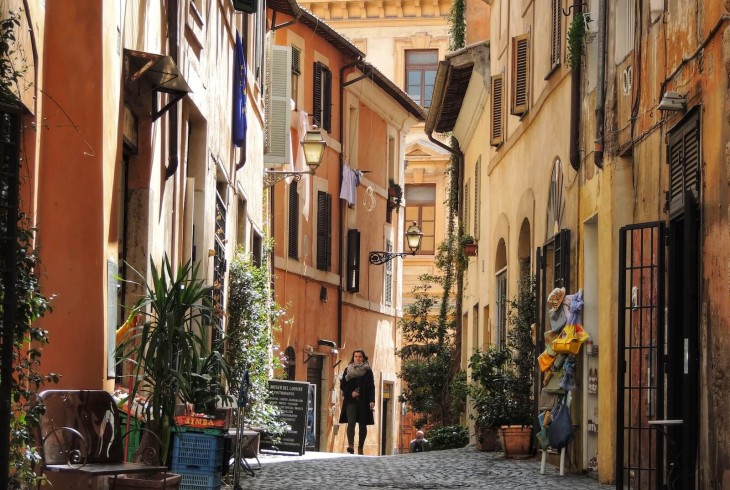In the soft light of a Spring morning, Rome is at its picture-perfect best. We’re standing in front of a tiny but elegant 18th-century outdoor chapel, known locally as the Tempietto del Carmello. Slender white marble columns stand out against a tangerine facade, bleached by the powerful rays of the Roman sun. Across the road, a bakery’s oven perfumes the air with the aroma of baking bread. Tucked away off Piazza Costaguti, this is one of the most peaceful spots in the Eternal City – but it conceals a very sinister past.

This is the heart of what is historically known as the Roman Ghetto, and it was right here that for centuries Rome’s ancient Jewish community were forced to listen to hectoring sermons demanding their conversion to Christianity every Saturday afternoon after their Sabbath services. The story of the Jewish Ghetto in Rome is a fascinating tale: both for its atmospheric beauty and its frequently tragic history, the quarter is one of Rome’s most enduringly fascinating areas – read on to discover it with us.
Table of contents:
- Tracing Europe’s Oldest Jewish Community
- A Short History of the Jewish Ghetto in Rome
- What to See In and Around Rome’s Jewish Ghetto
- The Great Synagogue
- Teatro Marcello (Theatre of Marcellus)
- The Porticus Octaviae
- Piazza Mattei and the Fontana delle Tartarughe
Tracing Europe’s Oldest Jewish Community

You probably know the darkest moments of this story already: segregated for over 300 years from the 1500s in a tiny and overcrowded area of the city, discriminated against as second-class citizens and subject to periodic bouts of persecution, the plight of Rome’s Jewish community only reached its awful zenith 70 years after the destruction of the Ghetto’s walls, with the unimaginable horror of deportation and genocide at Nazi death camps during the Holocaust. Outside the homes of Jewish families violently ripped from their community and murdered in distant Auschwitz, unassuming but powerful cobblestone memorials are engraved with the names of the victims and the date of their deportation and deaths. As you pass through the area look out for this stolpersteine (stumbling stones), standing as silent memories to one of humanity’s most terrible outrages.
But there’s a lot more to the rich history of Roman Judaism than the atrocities of the modern age. You might be surprised to learn that Rome’s Jewish community is the oldest in Europe, with a continuous presence in the Eternal City going back at least as far as the 2nd century BC. Attracted by the economic potential of the ancient world’s greatest and most ethnically diverse city, the Jewish minority was so well-established that by Julius Caesar’s consulate Judaism was granted the status of a religio licita, meaning it could be practiced freely in the empire city. Devoted to the man-who-would-be-emperor, ancient historians recount how the city’s Jewish population kept a vigil over his tomb after his assassination.
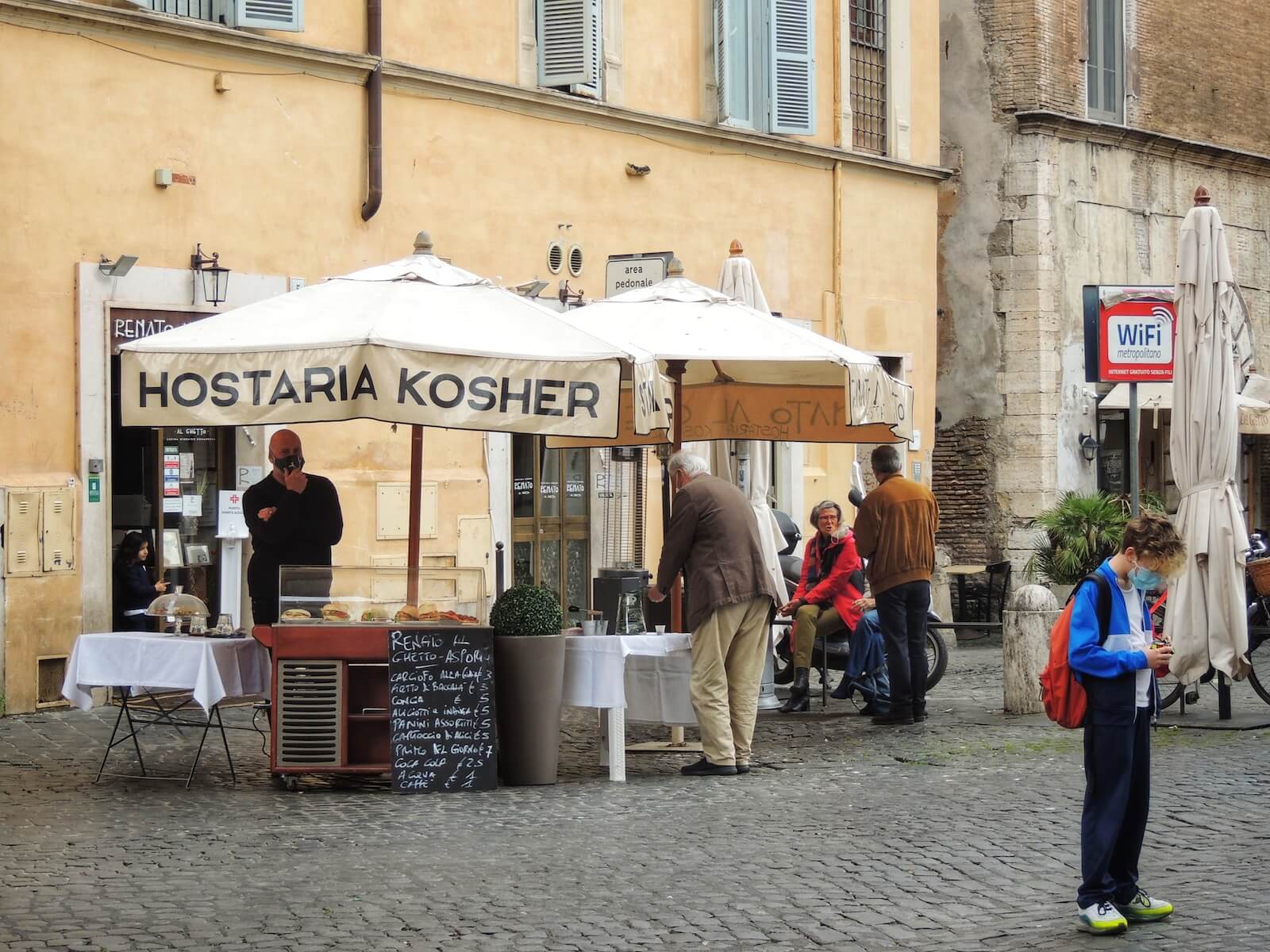
An influx of Jewish slaves into the city in the wake of the brutally supressed Jewish rebellion of 70 A.D swelled their number further - many of these new arrivals were exploited as forced labour in the construction of the Colosseum, but their descendants would form the majority of the city’s Hebrew community in the centuries to come. Under the edict of Caracalla in 212 A.D they were elevated to the status of Roman citizens, and in late antiquity the city boasted as many as 12 separate synagogues catering to a congregation estimated to be as large as 40,000 people.
Judaism’s more than 2,000 year story in Rome marks the community as unique in Europe. Unlike the history of forced migration and alienation that so frequently characterised Jewish communities elsewhere on the continent, Jewish life has been a constant and relatively stable feature of the Eternal City’s complex cultural patchwork. This indigenous community is known as italkim in contrast to the newer (but still venerable) Sephardic and Ashkenazi branches of Judaism dominant around the world today, and practice a distinctive and ancient form of Jewish rite and prayer.
A Short History of the Jewish Ghetto in Rome

The rise of Christianity in the later Roman empire spelled the end of the community’s good fortunes, and as the Papacy’s power over the city intensified Jewish rights were gradually stripped away. By the 13th-century Jews were obliged to wear a yellow badge of cloth to distinguish them from their Christian neighbours. Despite the best efforts of some of the more fanatical medieval popes and occasional outbreaks of anti-Semitic violence, however, relations between Rome’s Jewish population and the Christian majority remained comparatively benign throughout the Middle Ages and Renaissance. The community was widely renowned for its learning, and Jewish physicians were especially valued for their medical expertise – in the 15th century a succession of pontiffs even employed them as personal doctors.
Things took a dramatic turn for the worse in the mid-16th century, when the upheavals of the Reformation provoked a violent backlash against religious toleration across Europe. The Talmud was ritually burned on the orders of the Inquisition in 1553, and the fanatical and bigoted Counter-Reformation pope Paul IV went one step further two years later when he published a Papal bull demanding walls be erected to segregate the traditional residential quarter of Rome’s Jewish population – shattering over a millennium of co-existence at a single stroke. One of the city’s most ancient communities had been brutally alienated from their city. To add insult to injury, the Jewish community had to pay for the construction of the walls that cut them off.
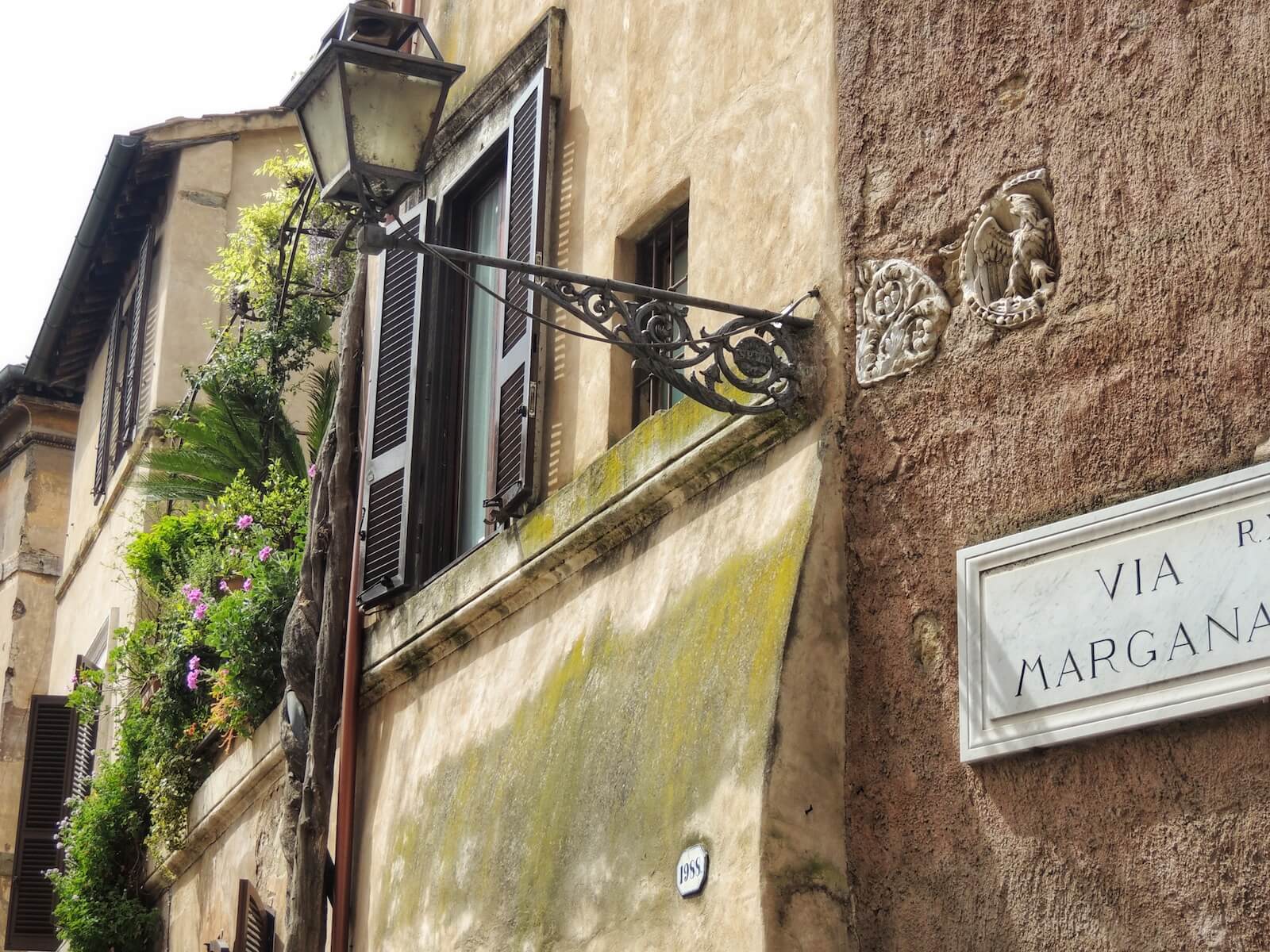
Even a partial list of the indignities and discrimination wreaked on Rome’s Jewish inhabitants in the wake of the Pope’s order is daunting. Jewish householders were forced to sell their property at a fraction of their value and rent them back at exorbitant sums from Christian landlords; curfews were introduced and residents were forced to return the Ghetto by nightfall; Jews were forced to wear yellow hats to signal their status as second-class citizens and banned from practicing high-status professions, constrained instead to make a living via peddling used garments (the so-called rigattieri). A small number of the community were also permitted to engage in moneylending under strict papal license - a necessary concession by Pope Sixtus V, as Catholics were officially forbidden from engaging in this vital economic activity.

Living conditions in the Ghetto soon declined, and poverty reigned supreme amongst increasingly cramped tenements towering over narrow streets. The Ghetto occupied a tiny area of 7 acres, hemmed in on all sides by high, windowless walls. The accommodation was at such a premium that many of its inhabitants could only manage to rent part of a single room, measured by the centimetre, and to increase space the only way to go was up. As the unwieldy edifices got higher and higher they took on strange forms – ‘tower-like masses of bizarre design’ according to one 19th-century description. What’s worse, the Tiber burst its banks in the low-lying Ghetto with alarming frequency, inundating the quarter and creating the perfect breeding ground for malaria. And then there were the sermons.

Paul IV and his successors on the Papal throne were convinced that the inhuman conditions would encourage Rome’s Jews to convert in their droves to Christianity, so liberating themselves from their urban prison. To this end they forced them to attend fire-and-brimstone conversion sermons delivered in or near the churches located on the fringes of the Ghetto every Saturday. In reality the strategy bore very little fruit, and there are only a small number of recorded cases of conversion over the Ghetto’s 300-year history. The roots of Roman Judaism were so deeply established that community cohesion remained remarkably high through the centuries of enforced hardship, and there are even reports of Jews filling their ears with wax to make clear their disdain at the preachers’ harangues.
The walls of the Ghetto were finally torn down in 1848 after a surprise order by Pope Pius IX, apparently compelled by the demands of the city’s increasingly liberal revolutionary spirit. After the final collapse of the Papal States and establishment of a unified Italy, the Ghetto was abolished for good in 1870. The tiny area’s 9,000 residents were given Italian citizenship and took their place as part of the modern country. Although the Ghetto was no longer a ghetto and the teetering tenements were razed to the ground and rebuilt, the Jewish community remained largely wedded to their traditional quarter. When the Nazis occupied the city in 1943 and set into motion the deportation of Rome’s Jewish population, the community was fractured in the most devastating manner imaginable. Of the 1,023 members of the Jewish Ghetto deported to Auschwitz, just 16 survived. The last remaining survivor, Lello di Segni, died last year in Rome at the age of 92.
What to See In and Around Rome’s Jewish Ghetto
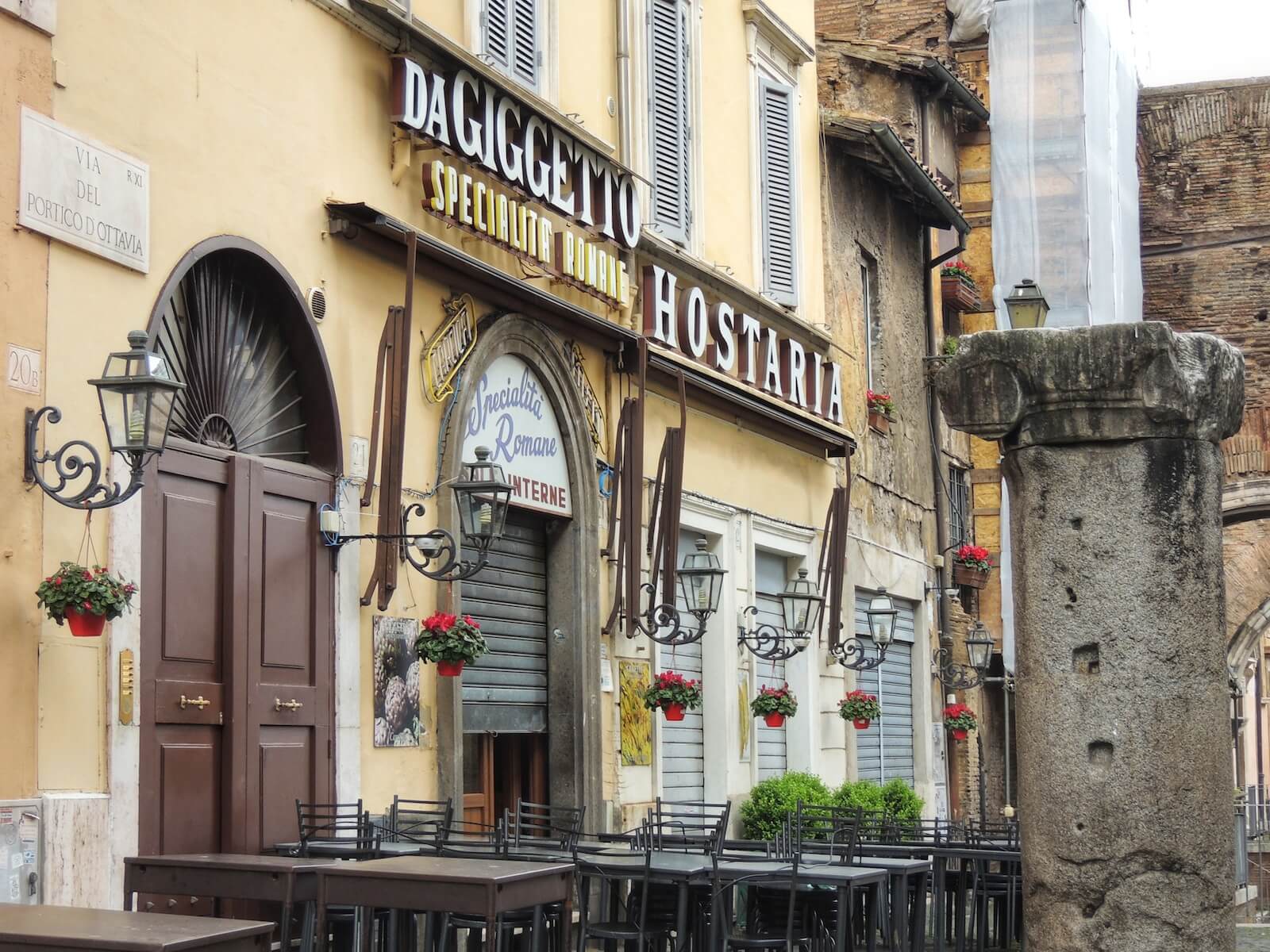
The best thing to do in the Ghetto is to simply wander around its warren of atmospheric streets and squares - take in the kosher shops, restaurants and bakeries that still bear the unmistakeable hallmark of this ancient slice of Rome’s cosmopolitan landscape. The picturesque and serene streets that you see today (thankfully) don’t give much of a sense of the deprivation and chaotic overcrowding that once reigned over the quarter, but it remains the authentic centre of Jewish life in the city.
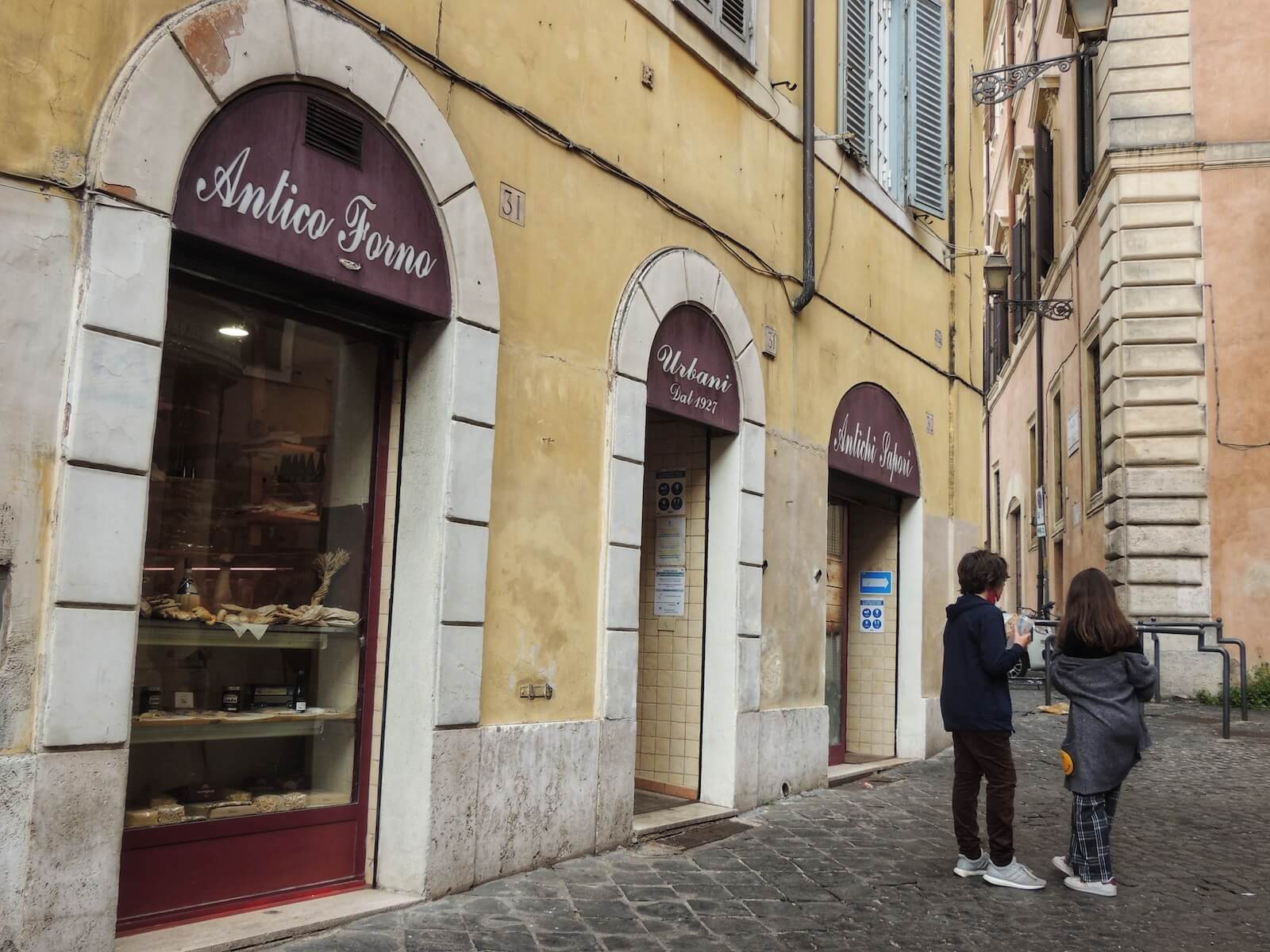
If you’re looking for sustenance stop off for lunch at one of the landmark kosher restaurants lining Via del Portico d’Ottavia and sample classics of Roman Jewish cuisine like carciofi alla giudea (Jewish artichokes) and stracotto (slow cooked meat in tomato sauce), or grab a crostata di ricotta e visciole (ricotta and sour cherry tart) from the historic bakery Boccione. The area conserves some spectacular monuments too, Jewish and non-Jewish alike. Here’s a very short guide to the places you need to see.
The Great Synagogue
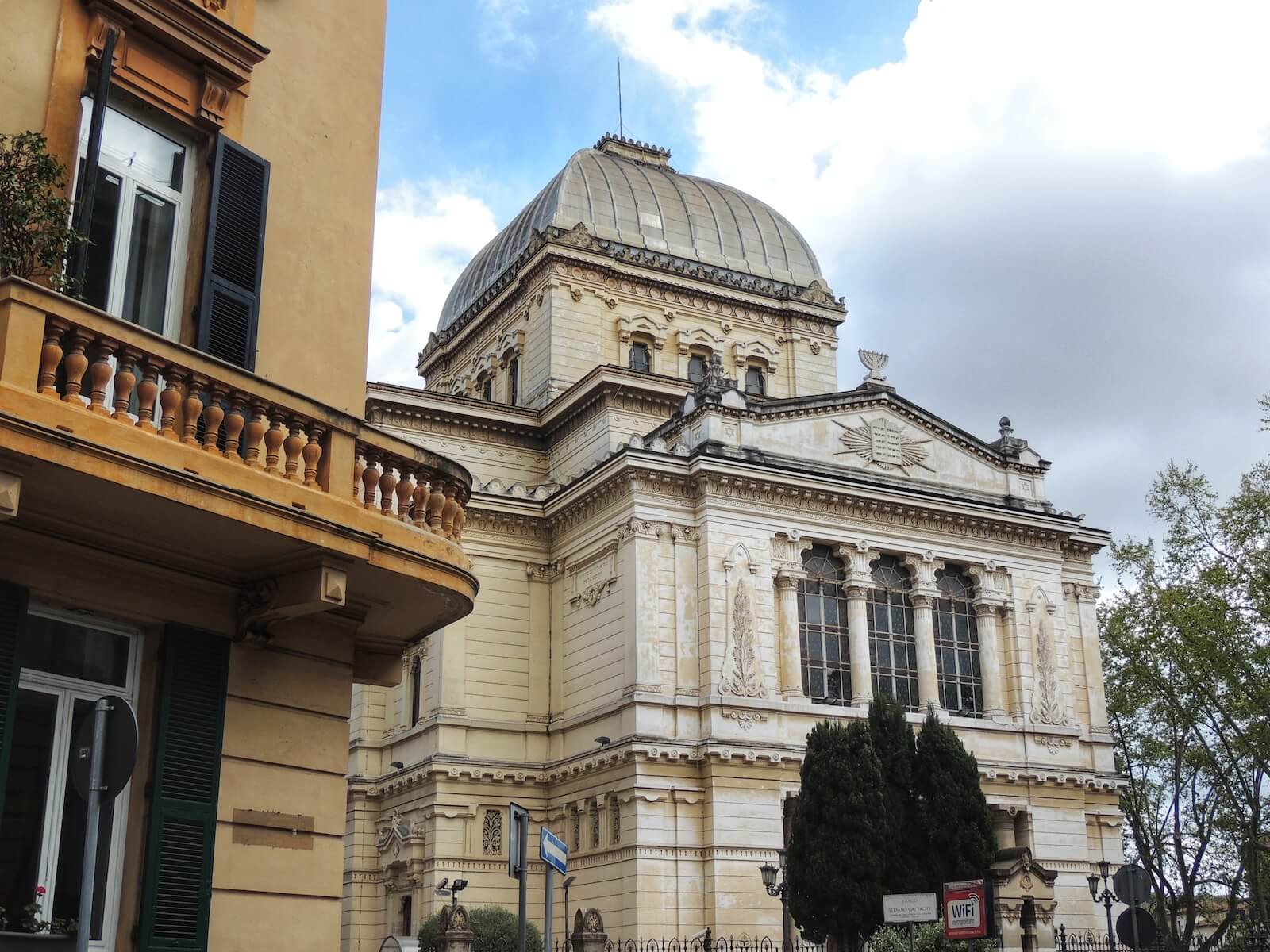
The true heart of the Jewish quarter, the massive Synagogue is an icon of the community’s reintegration into the city after 300 long years of segregation. Built after the demolition of the Ghetto to designs by Vincenzo Costa and Osvaldo Armann between 1901 and 1904, the Synagogue’s unusual square aluminium dome (the only one in the city) makes it immediately recognisable set against the round domes of the innumerable churches dotting the Roman skyline. Inside, an eclectic mix of Eastern Assyrian and Greek elements make it a riot of colourful decorative detail. The Synagogue is also home to the Jewish Museum of Rome.
Teatro Marcello (Theatre of Marcellus)
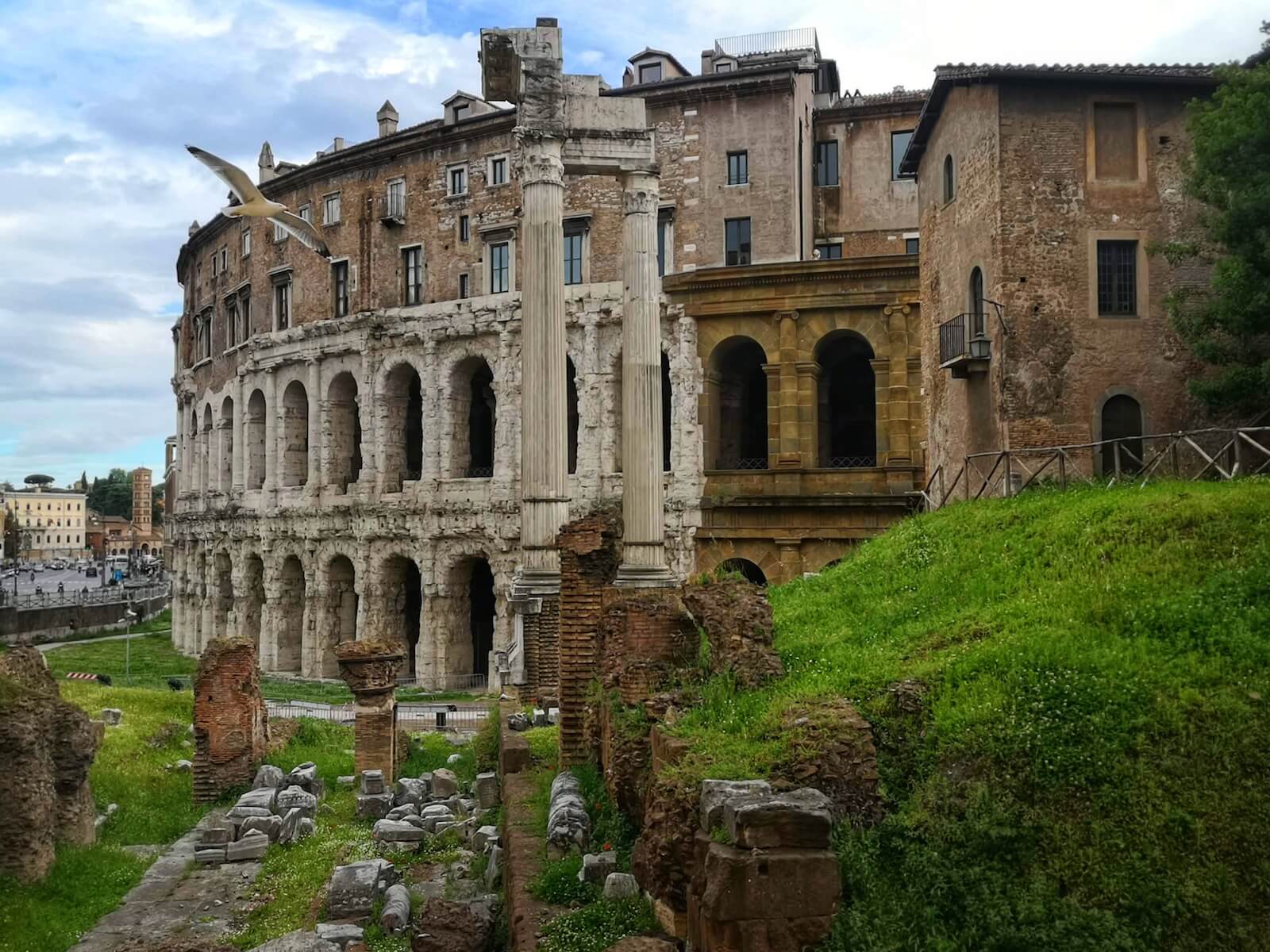
Located right on the historical boundary of the Roman ghetto, this wonderful ancient Roman theatre has been mistaken for the Colosseum by more than a few first-time visitors to the Eternal City. But the Teatro Marcello was a decidedly less bloody stage than the Flavian Amphitheatre: conceived by Julius Caesar and completed by Augustus in 13 B.C., the theatre could house up to 20,000 spectators and was the largest in ancient Rome, hosting plays and poetry performances. In the Renaissance the upper floors were converted to luxurious apartments for the Savelli clan by the renowned architect Baldassare Peruzzi. Amazingly these penthouses are still occupied today, and went on the market for a cool €32 million in 2012. To enter the Ghetto from here, pass through the ancient Porticus Octaviae.
The Porticus Octaviae

A spectacular colonnaded walkway whose massive marble columns once framed massive ancient temples dedicated to Jupiter Stator and Juno Regina, the Porticus Octaviae was decorated with some of the finest artworks of antiquity according to Pliny the Elder. In the medieval period the ruins were transformed into the city’s fish market, and a church was built right into the ancient columns themselves (site of more of those conversionary sermons delivered to residents of the Ghetto). The walk through here to the heart of the historical Roman ghetto on Via del Portico d’Ottavia is the most interesting way to enter the quarter. It was through this walkway that the funeral cortege of Lello di Segni passed last autumn.
Piazza Mattei and the Fontana delle Tartarughe
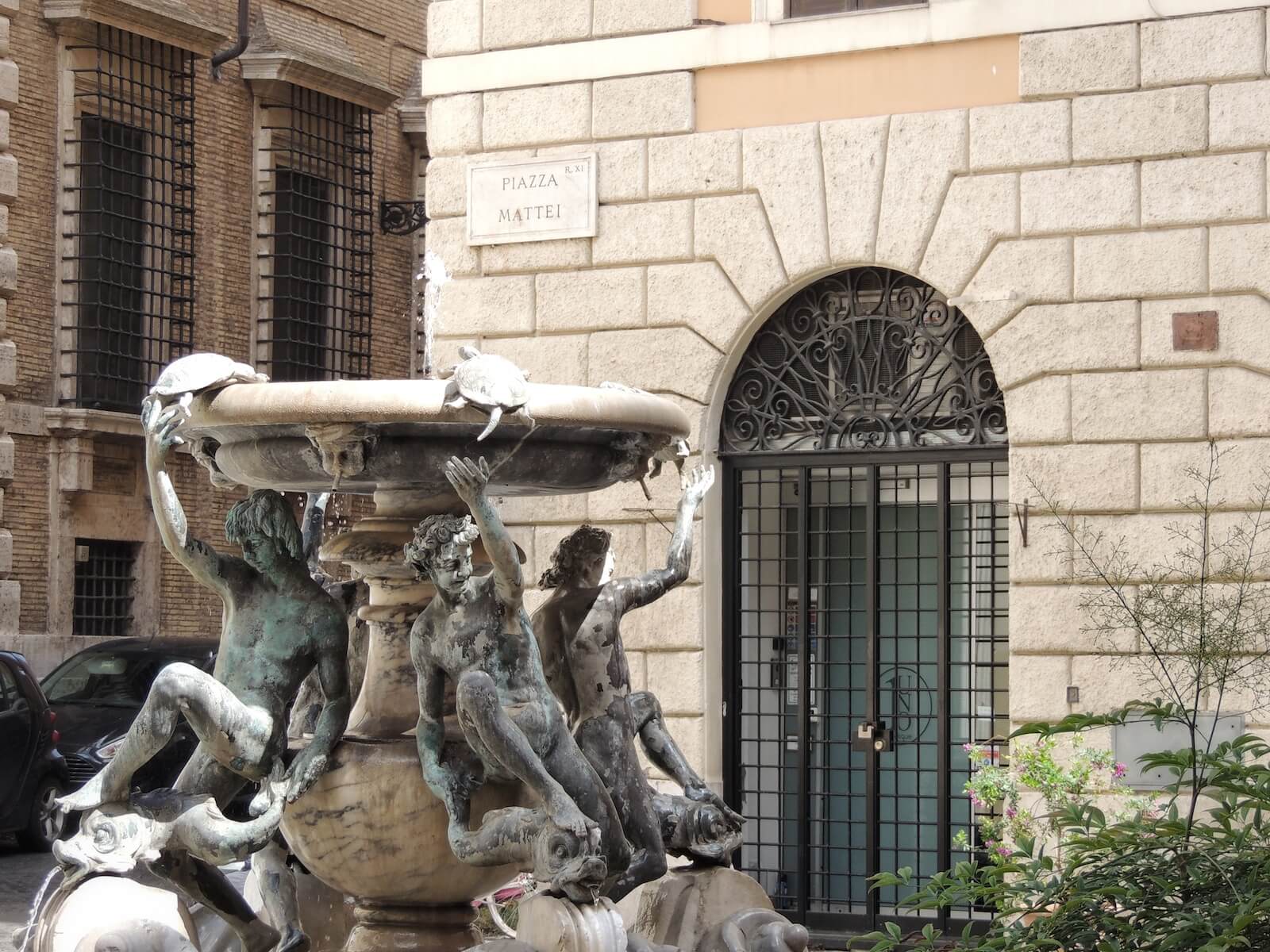
In a city of beautiful squares, Piazza Mattei figures near the top of most lists. The centerpiece is the wonderful Fontana delle Tartarughe (Turtle Fountain). Designed by Giacomo della Porta and executed by Taddei Landini, the ensemble of sinuous young men and dolphins was reportedly constructed in a single night in 1585. The legend goes that the gambling-addicted Mattei duke had the feat pulled off after his wedding had been cancelled in an attempt to prove to the father of the bride that he was no mere wastrel. The real story is altogether less savoury.
The fountain was originally commissioned to provide water to the residents of the recently established Ghetto, but the Mattei Duke (who controlled the entrance gates to the quarter) quickly requisitioned the monument and had the fountain moved outside his nearby palace instead. In the 1650s, Baroque master Gianlorenzo Bernini added the cute little turtles climbing into the basin. The Ghetto would have to wait decades before they finally got their water source via another fountain designed by della Porta, which you can still see today in Piazza delle Cinque Scole.
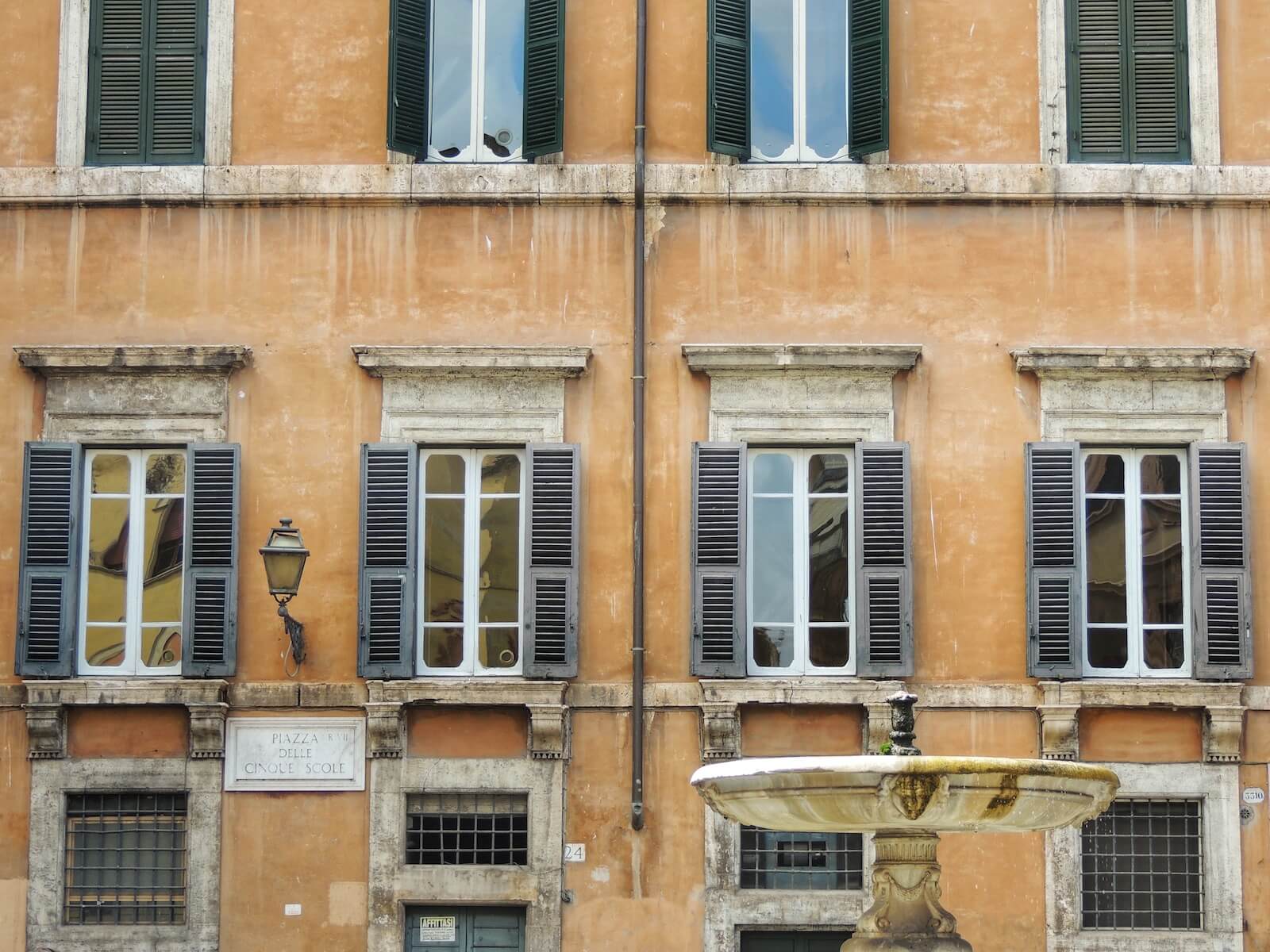
We hope you enjoyed our history and guide to the Jewish Ghetto in Rome. If you’d like to experience the fascinating quarter and learn about its history in more detail, get in touch with Through Eternity to book our Jewish Ghetto tour today.
